Supported Identity Providers
Configuration
In your.env file, make sure you have the following values set.
Instructions
.pem file as a base64-encoded string via the SAML_CA_CERTS environment variable.Okta
Create an SAML app
Configure SAML settings
-
Set the Single sign-on URL, Recipient URL, and Destination URL to
https://<your-tracecat-instance>/auth/saml/acs. -
Set the Audience Restriction to
https://<your-tracecat-instance>.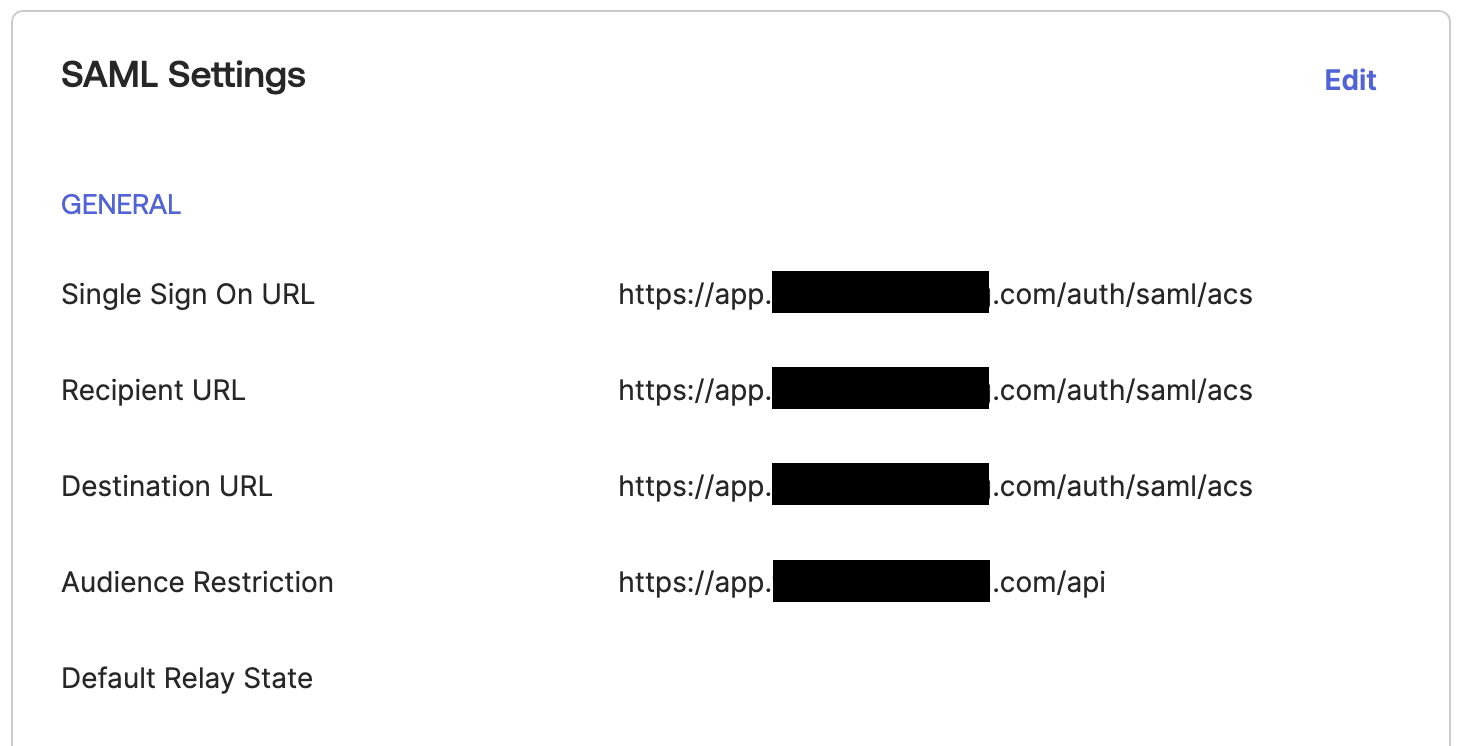
Configure attribute statements
email to user.email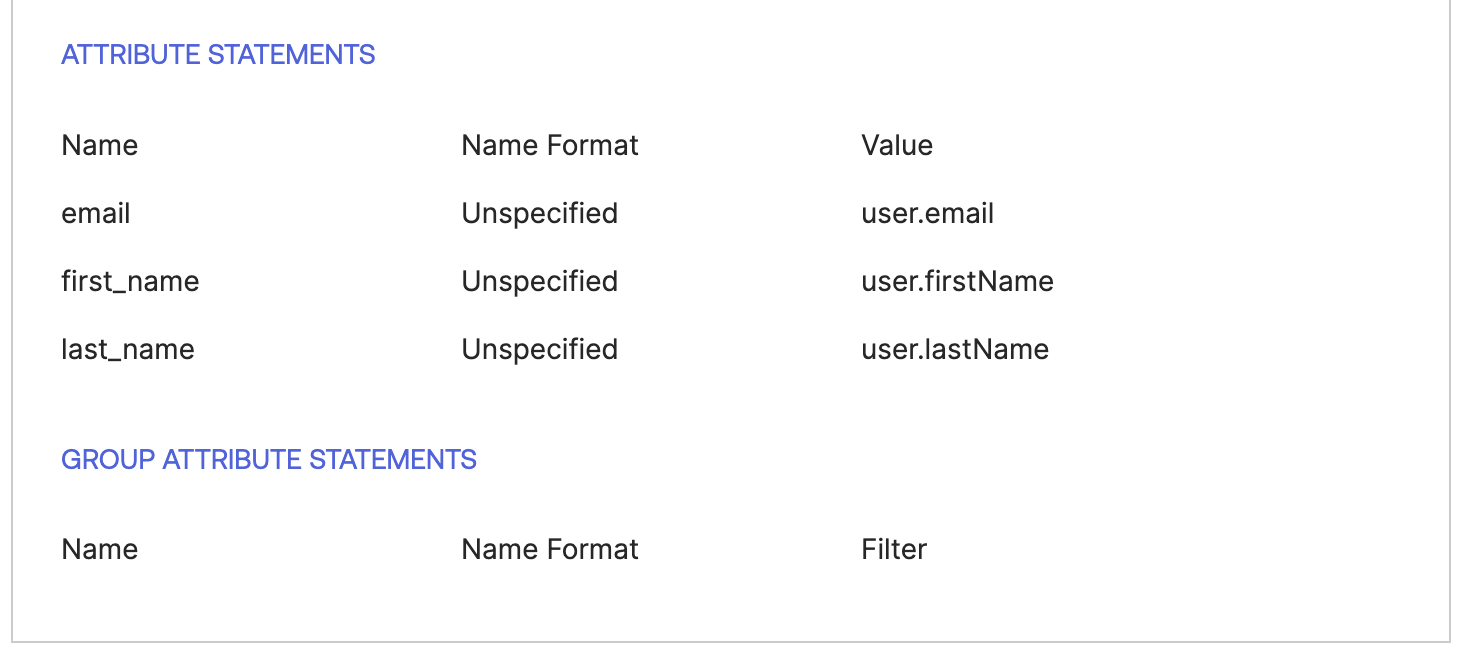
Configure SAML settings in environment variables
.env file:SAML_IDP_METADATA_URL: Okta metadata URL
Restart Tracecat instance
Test SSO configuration
Microsoft Entra ID
Create an SAML app
Configure SAML settings
-
Set the Reply URL and Sign on URL to
https://<your-tracecat-instance>/auth/saml/acs. -
Set Identifier to
https://<your-tracecat-instance>/api. -
Set Relay State to
https://<your-tracecat-instance>. -
Make sure that Sign SAML response and assertion is enabled.
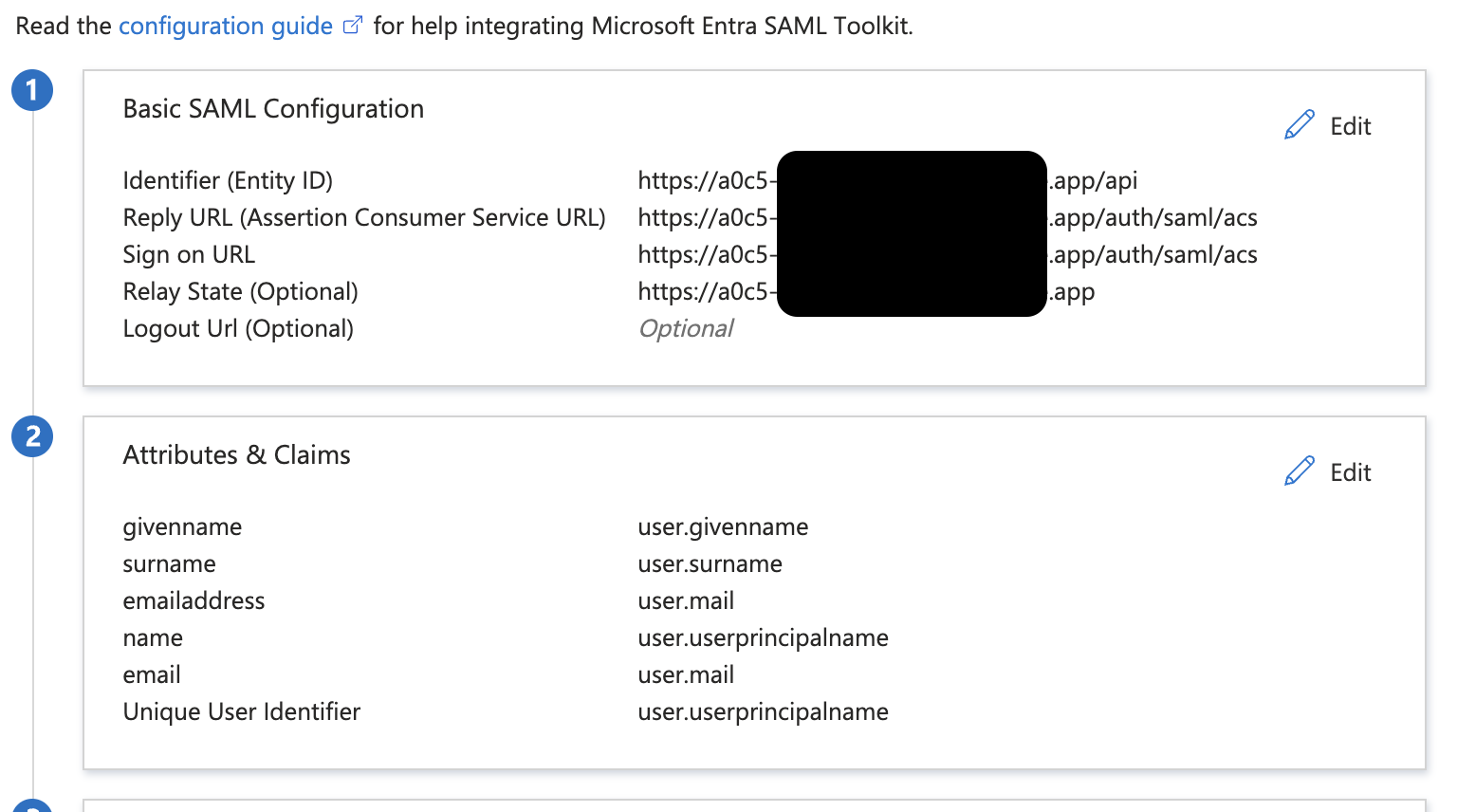
Configure attribute and claims
email to user.mailAuthentik
Create a provider
Configure the provider
- Enter a name and choose an authorization flow
-
Set the ACS URL to
https://<your-tracecat-instance>/auth/saml/acs. -
Set the Audience to
https://<your-tracecat-instance>/api.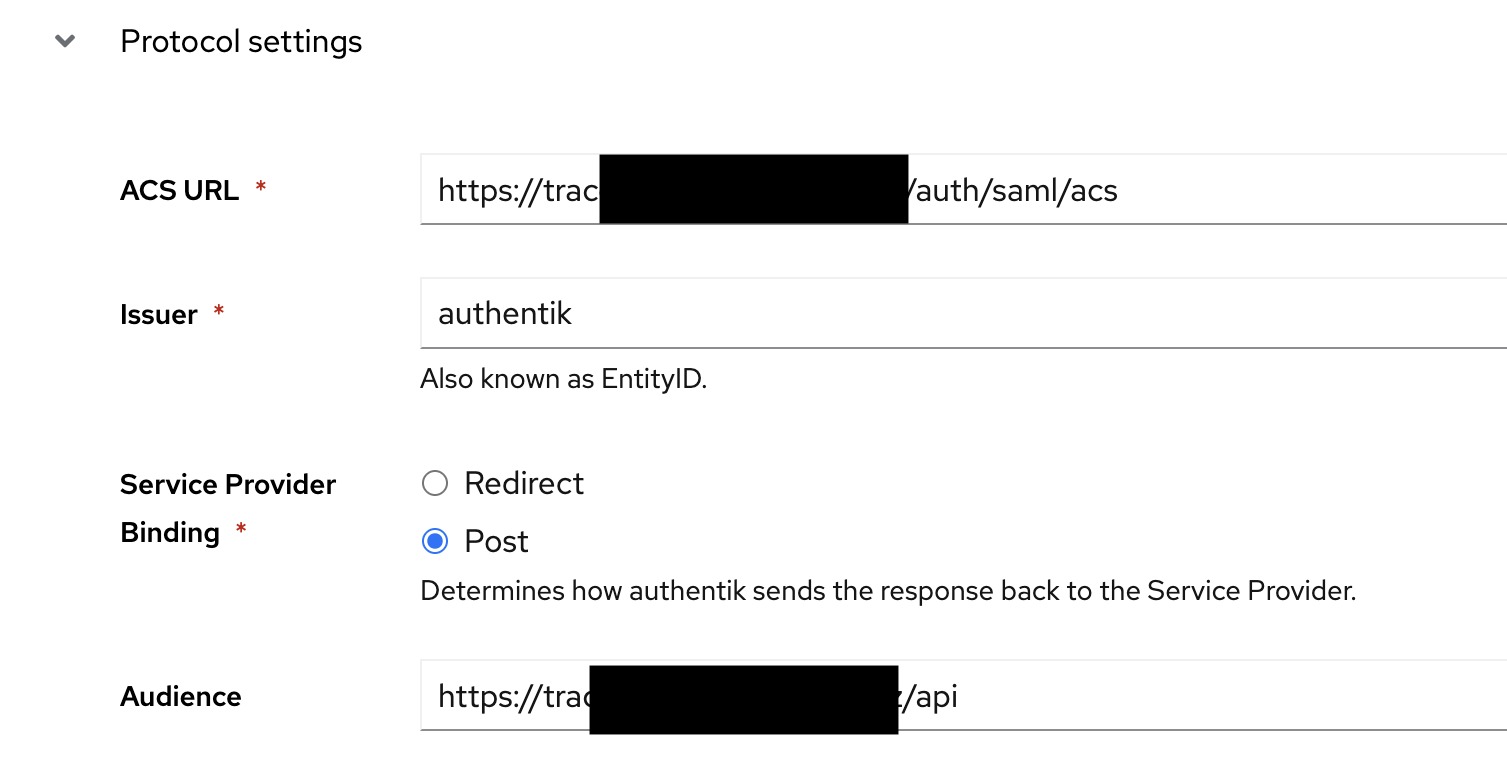
Configure assertion signing
- Expand the Advanced protocol settings section.
-
Select a Signing Certificate and ensure Sign assertions is enabled.

Configure property mapping
- Select authentik default SAML Mapping: Name in Selected User Property Mappings.
- Click the < button to deselect it.
-
Select the Finish button.

Create an Application
Find metadata URL
- Select the provider you created previously.
- Select the Metadata tab.
- Select the Copy download URL button.
Configure SAML settings in environment variables
.env file:SAML_IDP_METADATA_URL: Metadata download URL
Restart Tracecat instance
Test SSO configuration
Keycloak
Create a client
- Go to Clients and select the Create client button.
- Set the Client type to SAML.
-
Set the Client ID to
https://<your-tracecat-instance>/apiand select the Next button.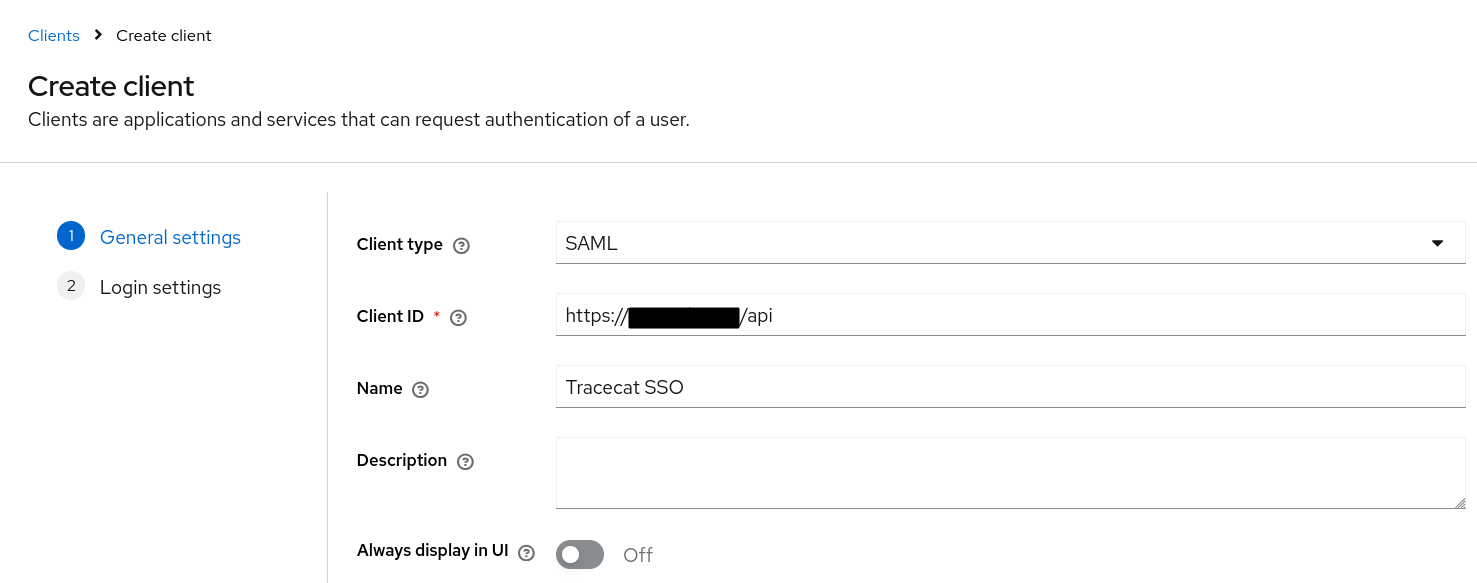
Configure a client
-
Set the Valid redirect URIs to
https://<your-tracecat-instance>/auth/saml/acs. -
Set the Master SAML Processing URL to
https://<your-tracecat-instance>/auth/saml/acsand select the Save button.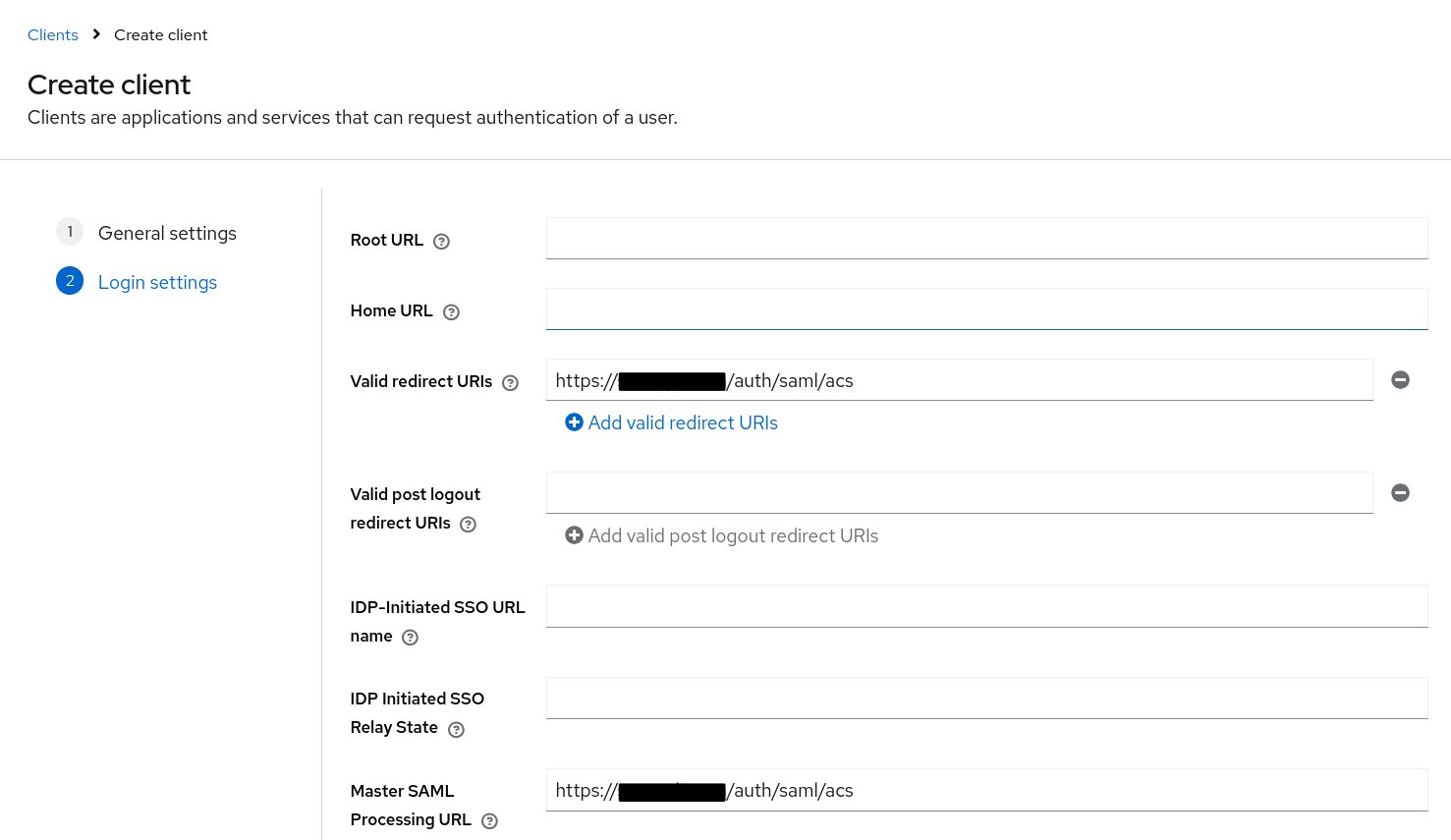
Configure document signing
- In Settings tab scroll down to Signature and Encryption section.
-
Ensure Sign documents is enabled.
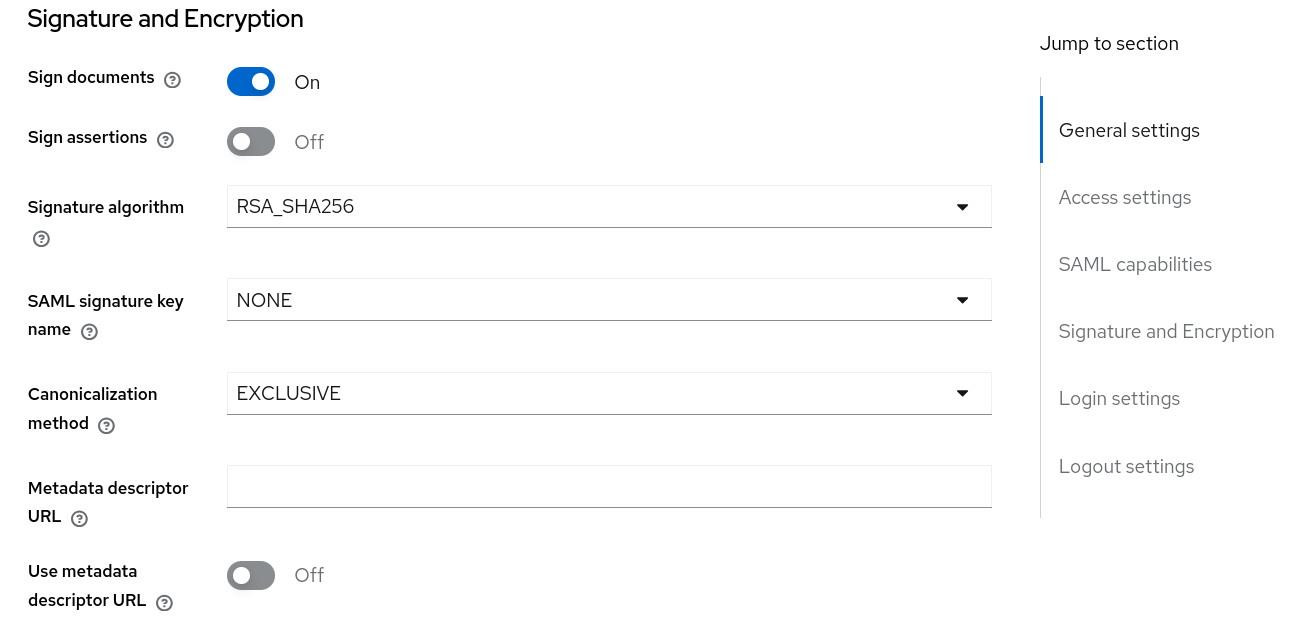
Disable client signing
- Open Keys tab and look into Signing keys config section.
-
Ensure Client signature required is disabled.
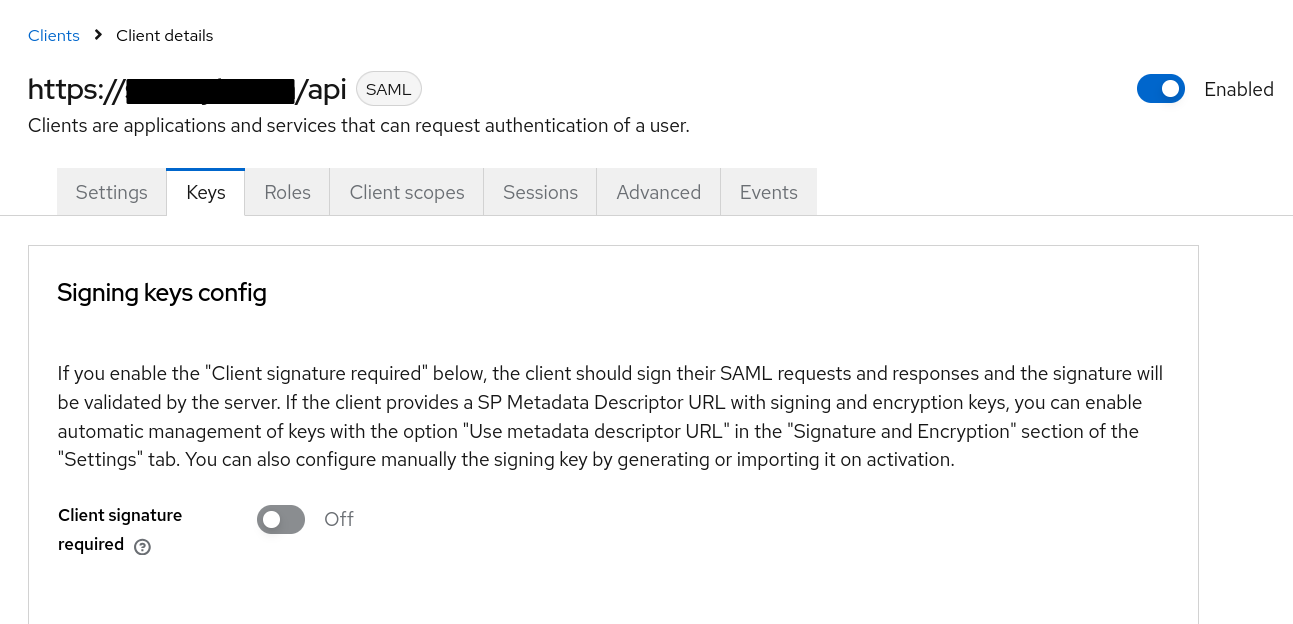
Configure property mapping
-
Open Client scopes tab and click on client scope
https://<your-tracecat-instance>/api-dedicated. -
Create new User Property mapper for email attribute and click Save.
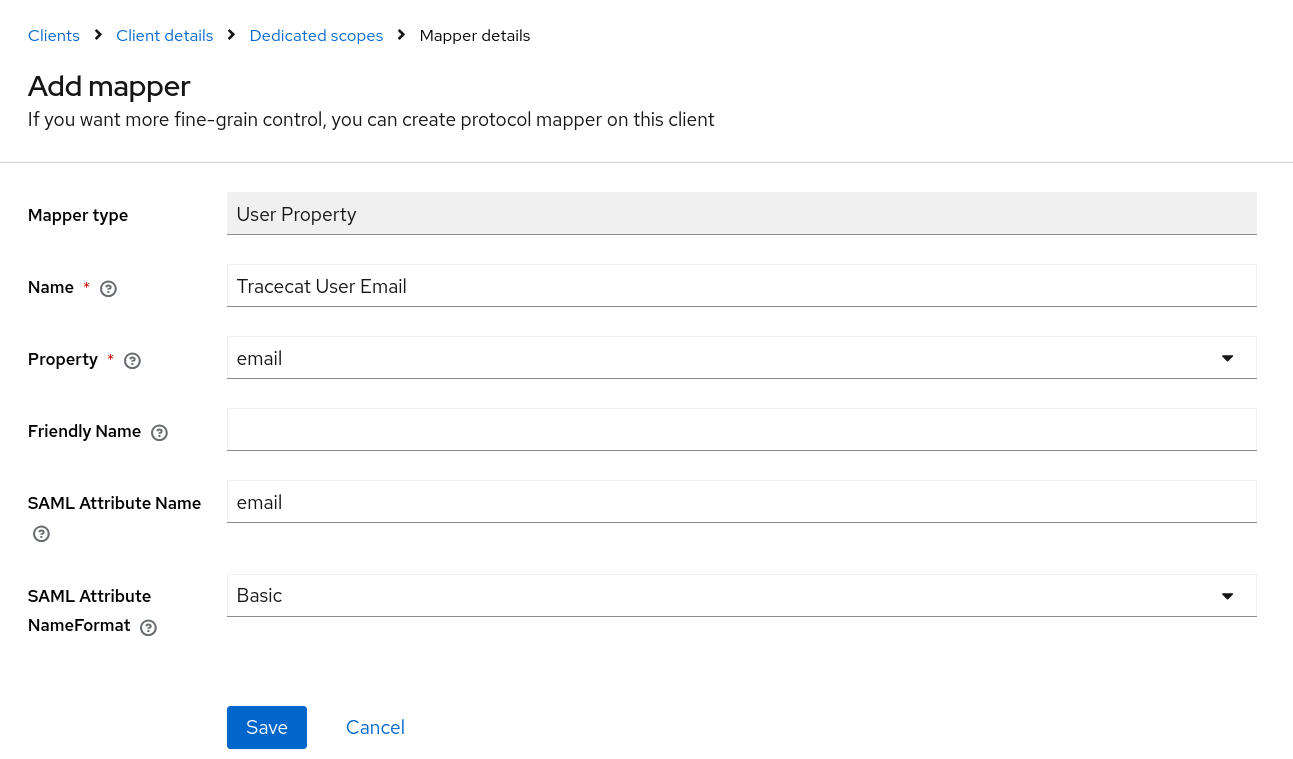
Find metadata URL
- Go to Realm Settings ➤ General ➤ Endpoints.
-
Copy the SAML 2.0 Identity Provider Metadata link.

Configure SAML settings in environment variables
.env file:SAML_IDP_METADATA_URL: Metadata download URL
Restart Tracecat instance
Test SSO configuration
Environment variables
If you know what you’re doing, you can configure the SAML configuration via environment variables in the Tracecatapi service:
Protocol Configuration
SAML_ALLOW_UNSOLICITED: Whether to allow unsolicited SAML responses (default:true)SAML_ACCEPTED_TIME_DIFF: Time difference in seconds for SAML authentication (default:3)SAML_AUTHN_REQUESTS_SIGNED: Whether to require signed SAML authentication requests (default:false)SAML_SIGNED_ASSERTIONS: Whether to require signed SAML assertions (default:true)SAML_SIGNED_RESPONSES: Whether to require signed SAML responses (default:true)
SSL Transport Configuration
SAML_VERIFY_SSL_ENTITY: Whether to verify SSL certificates for general SAML entity operations (default:true)SAML_VERIFY_SSL_METADATA: Whether to verify SSL certificates when fetching metadata (default:true)SAML_CA_CERTS: Base64 encoded CA certificates for SSL/TLS transport layer validation
SAML Protocol Configuration
SAML_METADATA_CERT: Base64 encoded certificate for SAML metadata document signature verification